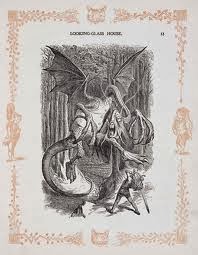Posted
on January 29, 2015
 Today's
famous birthday was a scientist and author who delved into so many
things I'm interested in: physics, quantum mechanics, cosmology,
philosophy, and skepticism / pseudoscience!
Today's
famous birthday was a scientist and author who delved into so many
things I'm interested in: physics, quantum mechanics, cosmology,
philosophy, and skepticism / pseudoscience!
Born
in New Jersey on this date in 1935, Stenger died last year. But what
he explored during his 79 years included the very, very teeny and the
mind-numbingly huge, the beginning of time and the ending of the
universe.
 |
Stenger worked on furthering our
knowledge about things like quarks
and gluons. |
And
if you don't count all that grand sweep of ideas that Stenger
explored, you can also look at the explorations he did right here on
Earth: His study of physics took him from New Jersey to Los Angeles,
to Hawaii, and to visiting positions at universities in Colorado,
Germany, England, Italy, and Japan. Also, Stenger became a public
speaker and promoted his books, science, and skepticism all over!
Here
is an example of some of Stenger's work for skepticism. In 1990 he
wrote a book called Physics and Psychics: The Search for a World
Beyond the Senses. In that book, Stenger examined claims by well
known psychics – claims about extrasensory perception (ESP) and
paranormal activity, things unknown and unseen – and he explained
how each of those claims could be explained with scientific
principles that have the benefit of tons of testing and evidence to
back them up. There is no need to resort to the supernatural when you
can explain things with the natural.
One of the psychics whose
tricks Stenger explained was Uri Geller. Geller was famous for
supposedly bending spoons with his mind. But really he is just an
illusionist or magician—and other magicians such as James Randi
easily demonstrate the exact same tricks that Geller relies upon.
Geller
didn't like being revealed as a fake in Stenger's book, so the
so-called psychic sued both Stenger and the publishers. However, the
case was dismissed, and Geller was ordered to pay legal fees of
nearly $50,000!
Stenger
also worked hard to decouple (separate) quantum physics from the
silliness that people keep spewing about life on the universe –
stuff they SAY comes from quantum physics but that really comes from
their misunderstanding of quantum physics. Examples of that silliness
include the movies What the Bleep Do We Know? and The
Secret, as well as the book The Secret. Stenger helped
show why these movies and book are incorrect about the power of the
mind.
Also
on this date:
Flight
pioneer Lawrence Hargrave's birthday
Geologist
Frederick Mohs's birthday
Plan
ahead:
Check
out my Pinterest pages on:
And
here are my Pinterest boards for:
 All
over the world, there are kids and teens under age 18 who don't have
a home. The “street” has become their home. And of course, by
street I mean abandoned buildings, vacant lots, freeway
underpasses—anywhere in the city that they can find temporary
shelter.
All
over the world, there are kids and teens under age 18 who don't have
a home. The “street” has become their home. And of course, by
street I mean abandoned buildings, vacant lots, freeway
underpasses—anywhere in the city that they can find temporary
shelter.




.jpg)








































